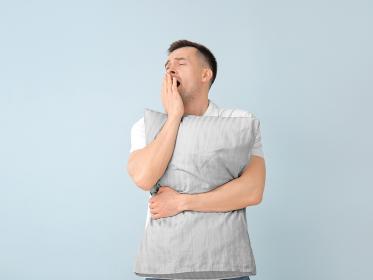Sleepy in the Daytime?
It can be very helpful to monitor a person during the day because it allows us to gain more insight about their daytime sleepiness. A daytime study is almost always preceded by an overnight sleep study. The daytime study uses many of the same sensors on the scalp and face we use for a nighttime study but does not usually include the sensors used to monitor breathing.
There are two different tests we conduct during the day:
Multiple Sleep Latency Test (MSLT)
This test is the most common way to objectively quantify sleepiness and is a key test in diagnosing narcolepsy. The MSLT is comprised of 4-5 trials or “naps” spaced throughout the day. During the test, you’re asked to relax and try to fall asleep.
There are two key pieces of information we gather from this study – the mean sleep latency, which is the average time it took you to fall asleep for all your naps, and the number of REM periods. It is atypical for a normal sleeper to have REM sleep during such a brief sleep period. Documenting REM in two or more of the trials can be a positive indication of Narcolepsy when used in combination with a clinical history.
Maintenance of Wakefulness Test (MWT)
The MWT is also a series of trials throughout the day, but instead of measuring your ability to fall asleep, it measures your ability to stay awake for a defined period of time under sleep-inducing circumstances. The test is based on the idea that, in some cases, your ability to stay awake may be more important than your ability to fall asleep. The MWT may be better suited for extremely tired individuals because it’s not confined by the floor effect that limits the MSLT.
This test is commonly used to document the effective treatment of a sleep disorder for the Department of Motor Vehicles or for an employer.

